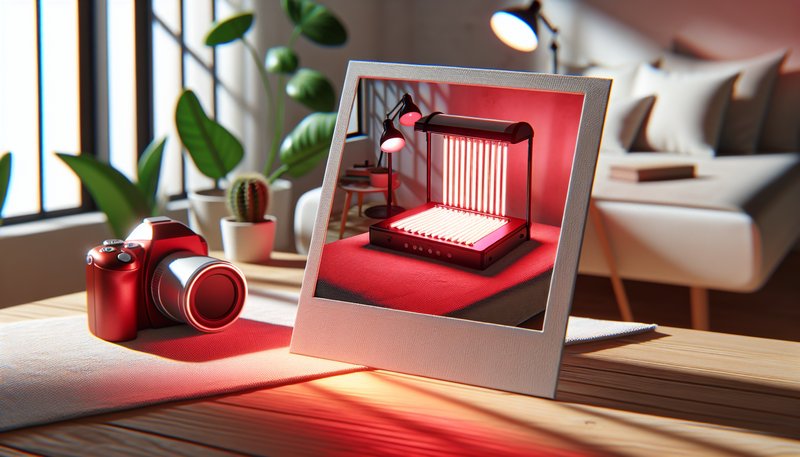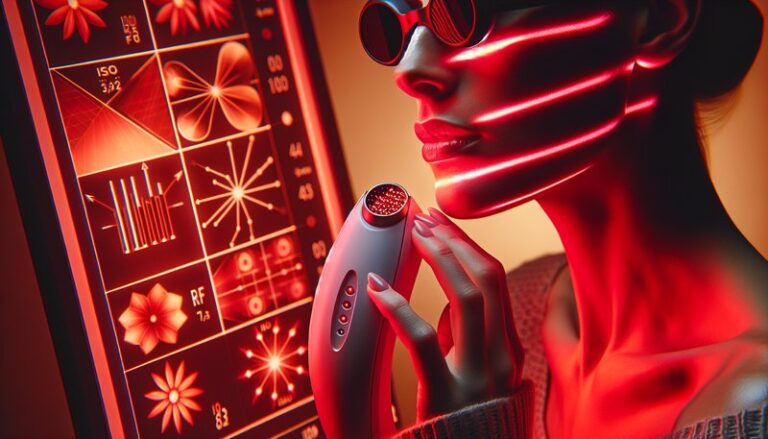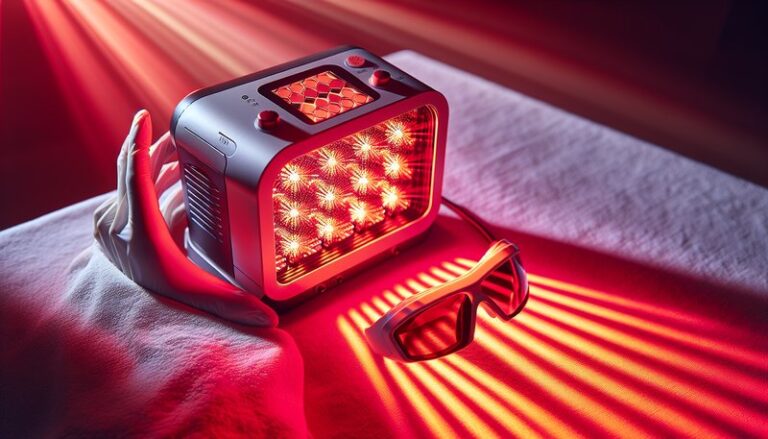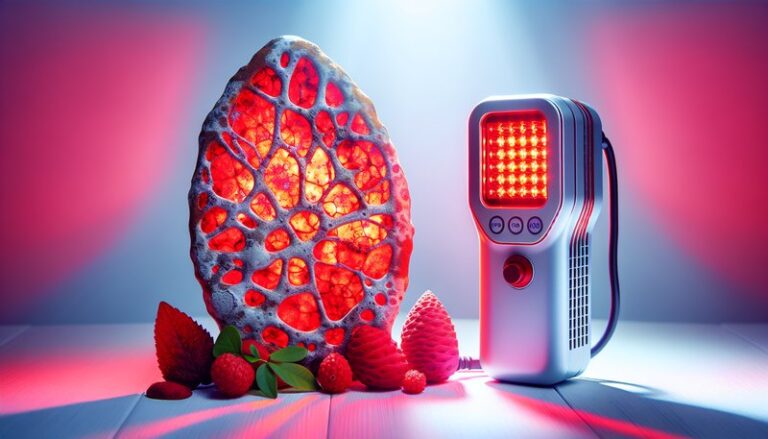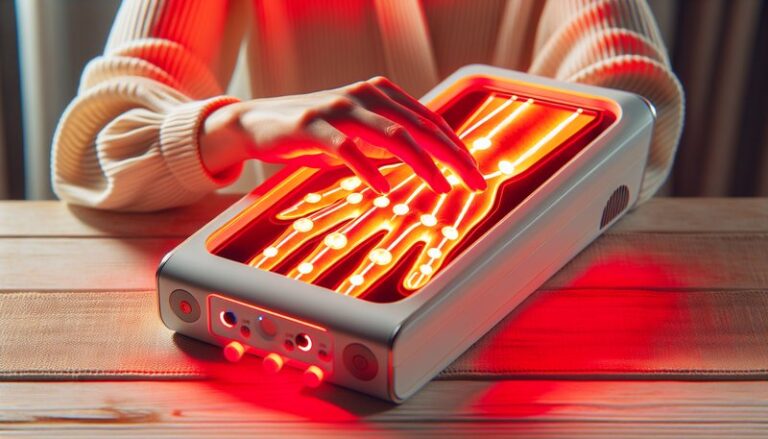Can I Do Red Light Therapy At Home?
Have you ever wondered if you can harness the power of red light therapy within the comfort of your own home?
Red light therapy (RLT) is gaining popularity as a natural and non-invasive treatment option for various skin and health issues. In this article, we will explore what red light therapy is, its benefits, the feasibility of conducting it at home, considerations to keep in mind, alternatives available, and address common questions surrounding the practice.
Key Takeaways
- Red light therapy can be effectively performed at home using specialized devices.
- The therapy offers multiple benefits, including improved skin health and pain relief.
- It is essential to consider safety, device quality, and specific goals before starting red light therapy at home.
What is Red Light Therapy?
Red light therapy is a treatment that utilizes low levels of red or near-infrared light to stimulate cellular processes in the body. This non-invasive therapy penetrates the skin layers, promoting healing, reducing inflammation, and improving overall skin appearance. Originally developed for medical purposes, it has expanded into the wellness and beauty sectors, making it accessible to a wider audience.
The therapy works through a process called photobiomodulation, where light absorption by the mitochondria in cells boosts energy production and enhances cellular repair mechanisms. This rejuvenating effect makes RLT popular among those seeking various health benefits.
What are the Benefits of Red Light Therapy?
Red light therapy boasts a range of benefits, making it appealing for both aesthetic and health-focused purposes. Let’s explore some of the key advantages.
Skin Health Improvement
One of the most sought-after benefits of RLT is its ability to improve skin health. Studies have shown that it can enhance collagen production, resulting in reduced wrinkles, fine lines, and improved skin elasticity. Many people use RLT to treat acne scars and overall skin tone, achieving a more youthful appearance.
Pain Relief
Another significant benefit of red light therapy is its analgesic properties. RLT has been shown to reduce pain and inflammation in conditions such as arthritis, tendonitis, and muscle strains. Many users report experiencing relief from chronic pain, making it a valuable option for managing discomfort.
Enhanced Recovery Times
Athletes and active individuals value red light therapy for its ability to speed up recovery times from injuries and intense workouts. By promoting blood circulation and reducing inflammation, RLT can help restore muscle and joint function more quickly after physical activity.
Mood and Sleep Improvement
Some users of red light therapy have reported enhanced mood and better sleep quality. The therapy may help regulate circadian rhythms and stimulate the release of serotonin, contributing positively to mental health and emotional well-being.
Is it Possible to Do Red Light Therapy At Home?
Yes, it is entirely feasible to perform red light therapy at home using a variety of devices that are available on the market. Home-use red light therapy devices come in various shapes and sizes, including handheld units, full-body panels, and face masks.
What are the Advantages of Doing Red Light Therapy at Home?
There are several advantages to considering red light therapy at home.
Convenience
Having access to RLT at home allows for greater flexibility and convenience. Users can fit therapy sessions into their daily routines without the need for appointments or travel.
Cost-Effectiveness
While some professional treatments can be expensive, investing in a home device may save money in the long run. After the initial purchase, users can continue to benefit from therapy without incurring recurring costs.
Personalized Treatment
At-home therapy enables users to customize their sessions according to their preferences and needs. This personalization can be particularly beneficial for targeting specific areas of concern.
What are the Disadvantages of Doing Red Light Therapy at Home?
Though there are many advantages to at-home red light therapy, there are also some challenges to consider.
Device Quality and Effectiveness
Not all home devices are created equal. Some lower-quality products may not deliver the proper wavelengths or intensity required for effective treatment. It’s crucial to research and choose reputable brands with verified outcomes.
Lack of Professional Guidance
Without the supervision of a trained professional, users may not fully understand how to use their devices optimally or how to address specific health concerns effectively. This lack of guidance can lead to suboptimal results.
Time Commitment
While the flexibility of at-home therapy is a benefit, it also requires a personal time commitment. Users need to be disciplined and integrate routine therapy sessions into their schedules to see meaningful results.
What are the Things to Consider Before Doing Red Light Therapy at Home?
Before embarking on your at-home red light therapy journey, there are several considerations to keep in mind.
Safety and Skin Sensitivity
It’s essential to assess your skin type and sensitivity before starting RLT. Individuals with certain skin conditions or sensitivity might experience adverse reactions to light therapy, and it’s advisable to consult a healthcare provider if unsure.
Dive into Can I Use My Phone in Red Light Therapy?
Identifying Treatment Goals
Clarifying your treatment goals is crucial for tailoring your therapy. Whether seeking skin rejuvenation or pain relief, understanding your objectives will help you choose the right device and treatment regimen.
Device Research and Purchase
Research is key when selecting a red light therapy device. Look for reviews, clinical studies, and certifications to ensure you’re investing in a quality product.
What are the Alternatives to Red Light Therapy?
If red light therapy doesn’t sound like the right fit for you, several alternatives exist.
Cold Laser Therapy
Cold laser therapy also uses light to promote healing without generating heat. It’s similar to red light therapy and can be effective for pain and inflammation management.
LED Light Masks
For facial applications, LED light masks utilize various wavelengths of light, including blue, red, and infrared lights, to target different skin issues such as acne and aging skin.
Topical Treatments
For quick effects on skin health, consider topical treatments like retinoids or serums with hyaluronic acid. These products can also improve skin texture and appearance, though they operate differently than light therapies.
Conclusion: Is it Recommended to Do Red Light Therapy at Home?
In summary, red light therapy can be effectively performed at home, providing users with accessibility to various health and beauty benefits. However, it’s vital to conduct thorough research, consider personal safety, and set clear treatment goals to maximize the therapy’s effectiveness. While there are both advantages and disadvantages to home use, many find it a worthwhile investment in their health and wellness journey.
Frequently Asked Questions
Can anyone use red light therapy?
Most individuals can safely use red light therapy; however, those with specific medical conditions or light sensitivity should consult a healthcare professional before starting treatment.
How often should I use red light therapy at home?
The frequency of use can vary depending on personal goals and device specifications, but many users find 3-5 times per week to be effective for optimal results.
Are there any side effects associated with red light therapy?
Generally, red light therapy is considered safe and well-tolerated, but some users may experience mild side effects such as temporary redness or skin sensitivity.
Will red light therapy work for hair growth?
Some studies suggest that red light therapy may promote hair growth in individuals with androgenetic alopecia, but results can vary based on the individual and treatment consistency.
Check out our deep dive Is Red Light Therapy Safe for Thyroid?
How long does it take to see results from red light therapy?
Results can vary widely, but many users report seeing improvements within a few weeks, depending on the condition being treated and the frequency of sessions.
